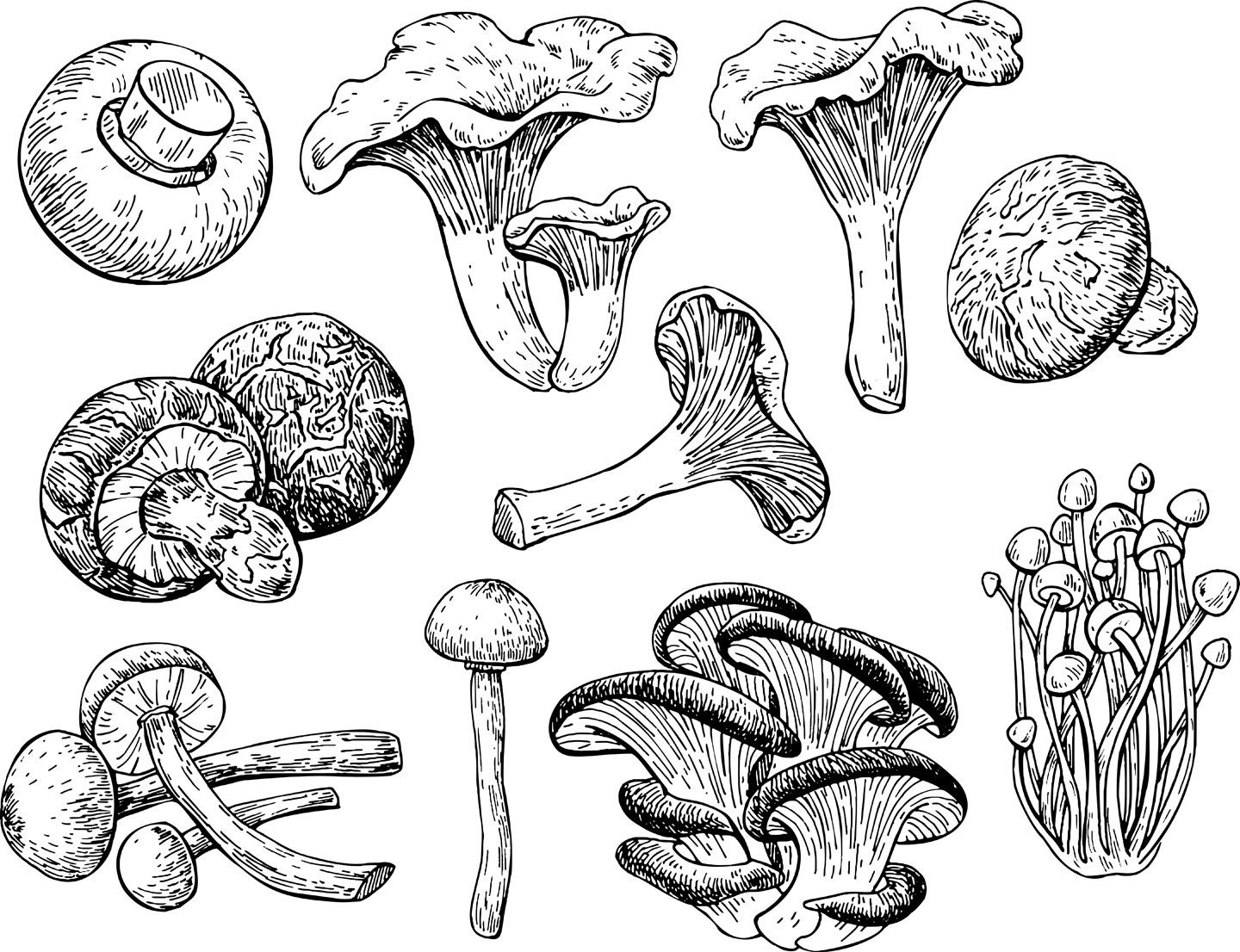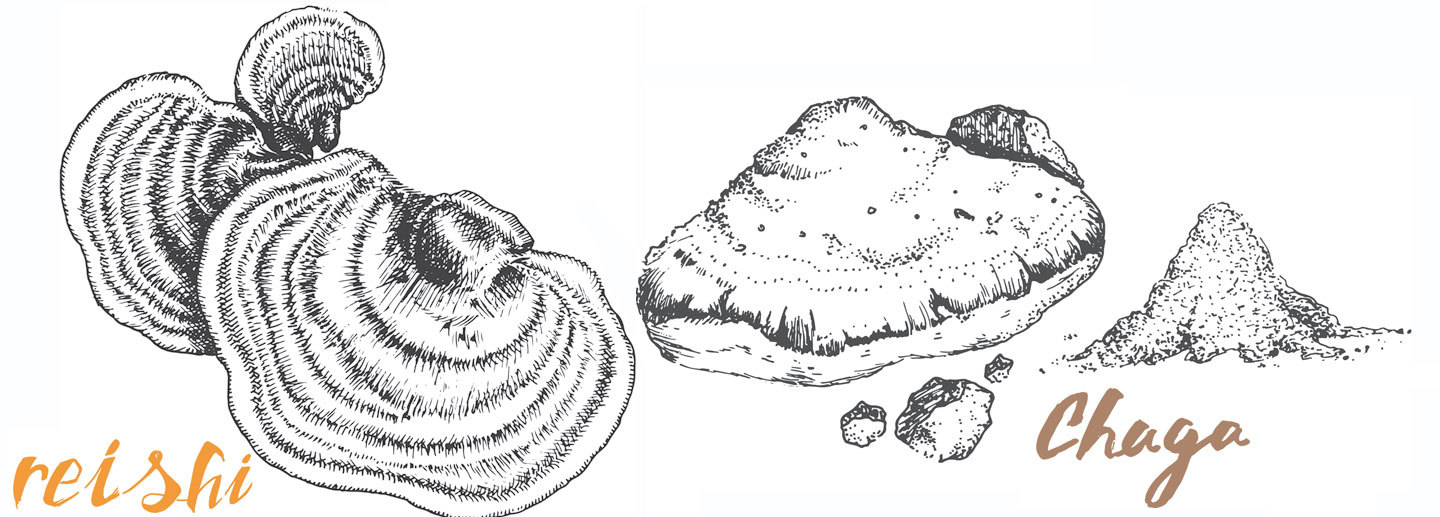 News
Articles & Recipes
Articles
Pop A Little Mushroom in Your Skincare
News
Articles & Recipes
Articles
Pop A Little Mushroom in Your Skincare
Pop A Little Mushroom in Your Skincare

Mushrooms are the fruiting bodies of fungi and as with any other family of microbe, there are the good, the bad and the ugly for the cosmetic chemist to deal with. Don't worry, the mushrooms we will be focusing on are all good!
Before I talk about the benefits of adding mushroom powders to cosmetic formulations, I want to talk a little more about the chemical factory that fungus is. The mushrooms that we see in the forest, eat, dye clothing with, photograph and use as medicine are only around 1/10th of the whole fungi, the rest, its mycelium network most often lives underground. If we think of mushrooms as the fruits, mycelium is the rest of this thing we call fungi and mycelium and mushrooms are themselves made up of groups of cells called in arrangements we call hyphae.
Fungi 'eat' by moving themselves over a potential food source and then sinking into it, breaking it down and transforming it completely. While humans have to ingest food in order to access its nutrition, fungi sink into their food, breaking it down and transforming it as they go.
Practically anything you can think of can be fungi food. They exist at nuclear waste dumps, in soil contaminated by other industrial waste chemicals, in salty sea water and in environments with super low oxygen levels. There is even a type of fungi that eats plastic which is exciting and a potential solution to the world's plastic problem.
The fungal digestive process is a chemical factory that can release of produce useful cosmetic chemicals via three different pathways. Firstly the fungi its self can be a source of useful ingredients, secondly through its digestive processes it can unpick and untangle the tight threads of a substance that would usually persist forever, re-arranging it into new materials as it goes. Thirdly fungi can literally poop out new and useful as it feeds.
Some examples of cosmetic chemicals made possible by fungi are Xanthan gum, Hyaluronic Acid, Beta Glucan, Lactic Acid, Citric Acid, Ceramides, Peptides, Carrageenan, Cyclodextrins, Rhamnolipids (surfactants), Preservatives (Radish Root Ferment Filtrate, Coconut Ferment), Papaya Enzymes, Bifida Ferment, Alcohol, Carotene, Omega Fatty Acids, Superoxide Dismutase and Chitin. As our appetite for natural, sustainable raw materials grows, its likely we're not done with the fungi factory quite yet!
A case for the whole mushroom
Step 1: Getting used to the idea
Unlike most herbs we associate with cosmetics (calendula, rosehip, lavender, green tea, witch hazel), mushrooms don't make the average person feel fresh, outdoorsy and clean. That is a barrier that has to be overcome emotionally rather than logically and is why we may be better first dipping our toe in with our microbiome.
Our skin Microbiome is something we are becoming increasingly comfortable in considering, discussing, and accommodating into our care regimen. Our microbiome includes fungi and fungi includes mushrooms so here we are again people, back at those old things again and here comes the ick but wait, before we submit to our deepest mushroom fears, it is worth remembering that when we talk about ourselves as individuals, as humans, that's not entirely true. We contain more non-human than human cells and at least part of that is fungi. Our skin barrier and immune health depends on this so we know that mushrooms can be the good guys sometimes...
Step 2: Overcoming the fear of contamination
Given the challenges that fungus presents to the cosmetic chemist, it is unsurprising that many formulators fear that adding mushroom powder to their cream will result in contamination although this is simply not the case. Any mushroom material destined for cosmetic use requires prior processing to extract its goodness and render it available for dermal application. The heat and extraction processes typically render the mushroom powder sterile which means it is longer able to breed, grow and colonise your product. Mushroom powders are really no different to any other carbon-rich matter you may put into your formula. Like any other powder including clays, exfoliants and powdered herbs they could introduce microbes on account of their large surface area. This risk this can usually be managed with careful ingredient storage, formulating method and adequate product preservation. A further step that can be employed is the irradiation of the extract either prior to or when formulated into the finished product. This strategy isn't available to those making organic formulations but can be useful for mass market brands wanting to minimise their chemical preservatives.
Step 3: The Sensory Story.
Mushrooms are known for their strong colour and scent when fresh and as such it is understandable that concerns may exist around how the powdered extracts will impact a products aesthetics. While it is true that most mushroom powders are somewhat tan to brown in colour, their typical use levels are not so high that this cannot easily be accommodated to create a natural looking off-white to cream emulsion. In terms of the smell, this can be an issue but one that is common across a number of popular natural actives: Rosehip, Evening Primrose or Hemp Seed Oil, Seaweed Extracts, Spirulina, Apple Cider Vinegar, Dead Sea Mud and even Tea Tree Oil. So, while some mushroom notes will be present in your cosmetic product, when you work within recommended dose guidelines, this background aroma should be something you can work around.

Mushroom power – skin benefits from these super foods
All mushrooms are a rich source of anti-inflammatory Beta Glucan, Antioxidants, Anti-microbials and Amino Acids, but different varieties offer their own unique beneficial range of chemistry that extends beyond these basics. First up is Reishi, the go-to anti-ageing mushroom or 'mushroom of immortality'. Its powerful and diverse range of antioxidants deliver anti-allergenic properties making it perfect for soothing ranges, anti-ageing products and products for improving skin barrier integrity. Shiitake is known for its broad-spectrum antimicrobial properties paired with anti-inflammatory action. Chemicals within Shiitake prevent the action of phospholipase A2, an enzyme that is upregulated in the skin when it is exposed to environmental toxins and stressors, from breaking down the skin barrier. This makes Shiitake the perfect additive to Urban lifestyle cosmetics and products designed to restore barrier function. Chaga mushroom provides us with a rich source of Betulin and Betulinic Acid both of which have been found to have anti-cancer properties. When topically applied, this mushroom is anti-inflammatory and has a topical pain-relieving effect making it perfect for medi-spa, tattoo, or salon procedure after-care. Finally we have Oyster mushroom with its melanin suppressing chemistry making this the go-to for anti-ageing, pigment control and brightening ranges.
How apt that it takes a little time and a bit of digging around to uncover the beauty and potential that exists within our cosmetic mushroom extracts. We hope you enjoy experimenting with them in your formulations.
Amanda Foxon-Hill
